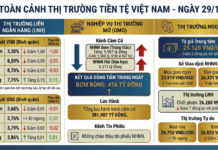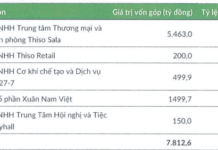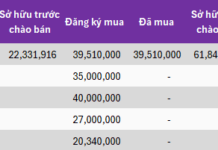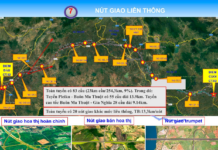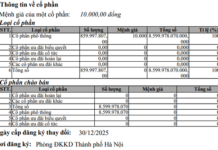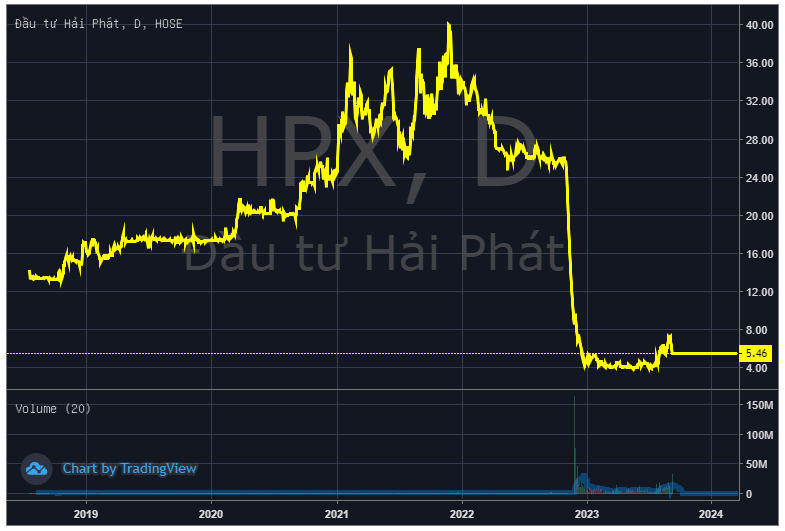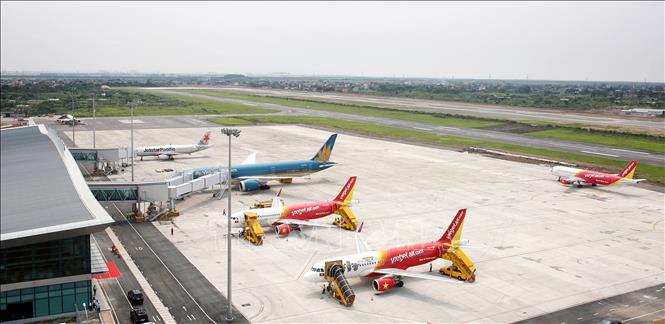
Cat Bi International Airport. Photo: VNA
According to the master plan for the development of the national airport system approved by the Prime Minister in Decision No. 648/QD-TTg dated June 7, 2023, Cat Bi International Airport will be expanded to accommodate 13 million passengers per year by 2030.
The detailed planning of Cat Bi International Airport (at a scale of 1/2000) for the period up to 2015 and with a vision towards 2025 was approved by the Prime Minister in Decision No. 1232/QD-TTg dated September 7, 2012, and locally adjusted by Decision No. 1994/QD-TTg dated November 3, 2014. After 10 years of implementation, many targets have been achieved, and some infrastructure has reached its capacity, necessitating a new plan with a longer planning period.
Currently, the Prime Minister has approved the Adjustment of the Master Plan of Hai Phong city until 2040, with a vision towards 2050, in Decision No. 323/QD-TTg dated March 30, 2023, and the Planning of Hai Phong city for the period of 2021-2030, with a vision towards 2050, in Decision No. 1516/QD-TTg dated December 2, 2023. These plans update development data, set new goals and visions, and synchronize the city’s transportation and infrastructure systems.
The Vietnam Aviation Authority believes that it is necessary to review and adjust the planning of Cat Bi International Airport to ensure alignment with the city’s transportation plan and meet the demand for air transport to and from Hai Phong and neighboring provinces.
Accordingly, the position and function of Cat Bi Airport in the national civil airport network remain unchanged as an international airport with a mixed civilian and military nature.
For the period of 2021-2030, Cat Bi Airport will have a 4E-grade civilian airport and a grade I military airport, with a capacity of 13 million passengers and 250,000 tons of cargo per year. It will have a total of 30 aircraft parking positions and will serve Code C aircraft such as A320/A321 and Code E aircraft such as B747/B777/B787/A350 and their equivalents.
Looking towards 2050, Cat Bi Airport will maintain its 4E-grade civilian airport and grade I military airport status. It will have a capacity of 18 million passengers and 500,000 tons of cargo per year, with a total of 50 aircraft parking positions. The types of aircraft served will remain the same as in the previous period.
Regarding the cargo terminal, in the period of 2021-2030, a cargo terminal will be constructed on the west side of the T1 passenger terminal, covering an area of approximately 23,500 square meters, with a capacity of about 100,000 tons of cargo per year. There is a possibility to expand and accommodate up to 250,000 tons of cargo per year if needed.
By 2050, the plan is to allocate a cargo terminal area in the southern region of Runway 2 to serve passenger flights with cargo. Approximately 80,000 square meters of land (including the cargo terminal, car parking, and other synchronous facilities) will be allocated to meet the demand by 2050, with the potential to expand to accommodate up to 500,000 tons of cargo per year in the future.
For the passenger terminal, in the period of 2021-2030, the Vietnam Aviation Authority proposes to retain the existing T1 passenger terminal and construct a new passenger terminal (T2). The combined capacity of T1 and T2 will be 13 million passengers per year.
Looking towards 2050, the Vietnam Aviation Authority suggests researching, selecting an appropriate option, and constructing an expanded passenger terminal with a total capacity of 18 million passengers per year. Additionally, a shared passenger terminal could be built in the southern region of Runway 2 if required.
The Cat Bi Airport passenger terminal was invested in and put into operation in May 2016, in line with the approved planning. It has a floor area of 15,630 square meters, a car parking area of 35,573 square meters, and can accommodate 2 million passengers per year. In 2019, it served 2.6 million passengers.
Currently, the Vietnam Airports Corporation is implementing procedures for investing in projects to construct the T2 passenger terminal with a capacity of 5 million passengers per year, a cargo terminal with a capacity of 100,000 tons of cargo per year, and an aircraft parking apron in front of the passenger terminal, increasing the total number of Code C parking positions to 26.
Upgraded Phu Cat Airport Receives over 7.3 trillion VND Investment
The People’s Committee of Binh Dinh Province has recently issued a letter regarding the decision to proceed with the investment procedure for the expansion of Phu Cat Airport, following the development plan for Phu Cat Airport in the period of 2021-2030, with a vision towards 2050.







